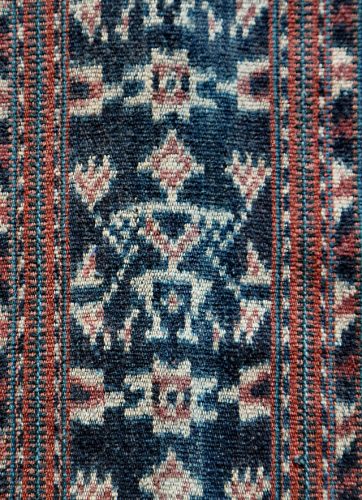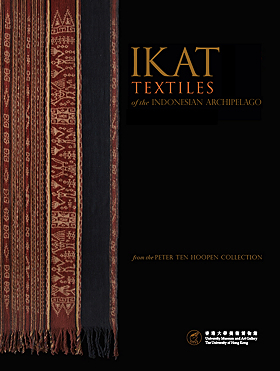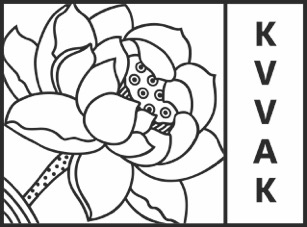
Collecting Indonesian ikat and amulets: an afternoon with lectures, book presentations and an interview
On 13 October the KVVAK organises an afternoon with lectures, book presentations and an interview about important collections of and recent publications about Ikat and about amulets of the Dayak.
Programme
13:45 Registration
14:00 Opening
14:10 Lecture by prof. Raymond Corbey on his book about Amulets of the Dayak
14:50 Coffee and tea break
15:10 Lecture by Steven G. Alpert about collecting ikat
15:40 Interview Renée Steenbergen with Peter ten Hoopen, collector of ikat
16:10 Presentation of the book of his collection by the publisher (Hongkong University Press)
During the break and after the lectures, the publication about Ikats by Peter ten Hoopen and the publication by Raymond Corbey about Amuletten of the Dayak will be for sale with a discount.
Location
Auditorium, Rijksmuseum Amsterdam
Raymond Corbey
Raymond Corbey, a philosopher and anthropologist, holds a chair in both Philosophy of Science and Anthropology in the Faculty of Archaeology of Leiden University.
Most of his research deals with human cognition, sociality, and cultural behaviour in an evolutionary perspective. A major focus here is the analysis of “domain assumptions” (implicit ontologies) guiding research in various anthropological disciplines, in particular cultural anthropology and evolutionary anthropology.

Peter ten Hoopen
Peter ten Hoopen began collecting ikat textiles from the Indonesian archipelago in the late-1970s, first attracted by their shimmering, strangely unsteady patterns suggestive of altered states, a world of dreams and visions. This awakening of interest fortuitously coincided with the ‘golden age’ of ikat research which generated several of the field’s inspiring classics—and with opportunities to travel to ikat-producing islands. His interest deepened as he discovered that the textiles were deeply meaningful both socially and spiritually, speaking of origin and belonging, and of connections with gods, ancestors and the spirit world. Becoming aware of the astounding diversity of regional styles, and of the precipitous decline of ikat as a vital aspect of the islands’ cultures, in 1980 he began work on a collection that eventually would encompass the entire archipelago: fifty different ikat weaving regions, each with their own particular style and cultural role.
Ten Hoopen’s credo became ‘collect the culture, not the piece’. When faced with collapsing traditions, the most crucial part of conservation is not the preservation of emblematic examples, however imperative, but rather the preservation of knowledge, which is so much more perishable than objects. He then began documenting his textiles with an intense level of detail, and sharing this crucial information with the world through his Pusaka Collection website, which quickly became the premier on-line reference tool for the subject.
The realisation that no comparable reference work existed in print triggered ten Hoopen’s ambition to create such a volume, which led to a partnership with the University Museum and Art Gallery, University of Hong Kong, on the 2017 exhibition ‘Fibres of Life’ and to the initial stages of the present work—Ikat Textiles of the Indonesian Archipelago. It is hoped that this book—enriched by the contributions of a dozen regional experts, several fellow collectors, curators and photographers, and detailing ikat regions and aspects never before covered—will stimulate the collecting of ikat from across the Indonesian archipelago, both private and institutional, and inspire further research into this vanishing art.

